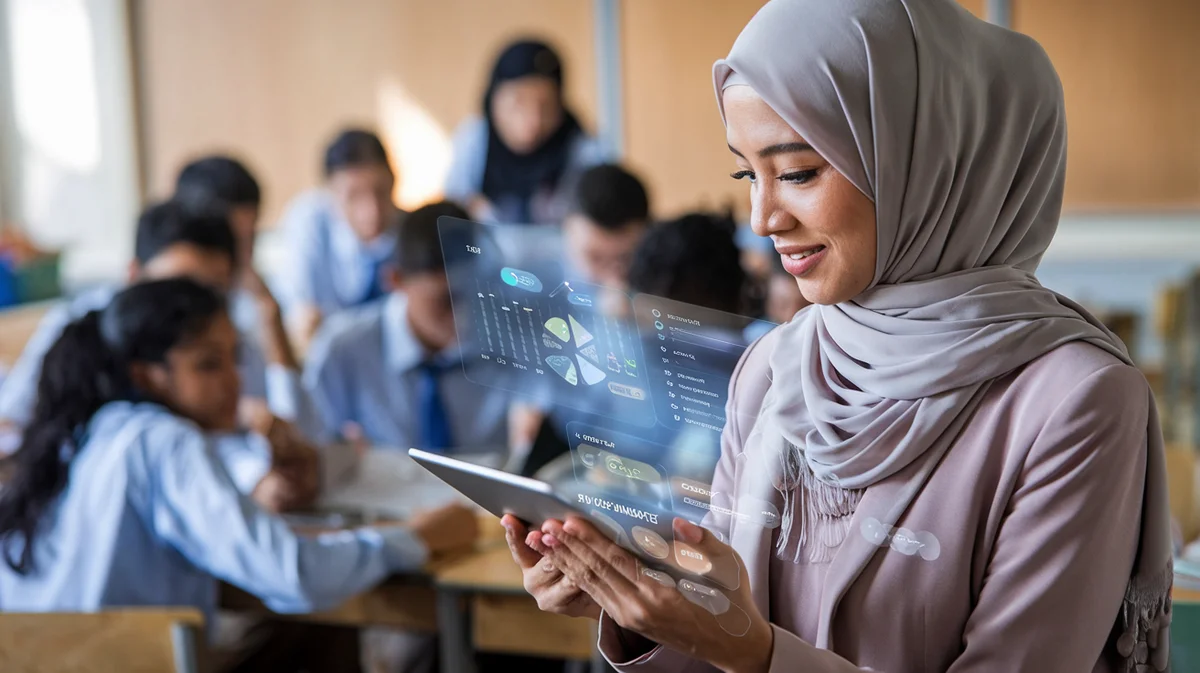Malta STEM Classroom: Roadmap to Digital Science Education


wp:paragraph
Malta is rapidly emerging as a leader in digital science education, setting a powerful example for other nations seeking to modernize their educational systems. As we at UNOWA continue to empower institutions, educators, and students with innovative, inclusive, and scalable solutions, Malta’s journey offers valuable lessons and inspiration for all stakeholders in the education sector.
/wp:paragraph
wp:heading {"level":2}
Malta’s Digital Education Strategy: A Vision for the Future
/wp:heading
wp:paragraph
Launched in April 2024, Malta’s Digital Education Strategy 2024–2030 is a bold and comprehensive roadmap designed to integrate digital competencies across all levels of education, with a special focus on STEM (Science, Technology, Engineering, and Mathematics) subjects. This strategy is not just a policy document — it is a national commitment to preparing students and educators for the demands of a rapidly evolving digital society.
/wp:paragraph
wp:paragraph
Malta’s approach is guided by four strategic pillars:
/wp:paragraph
wp:list
- Nurturing Digital Global Citizens
- Empowering Educators for the 21st Century
- Community Engagement and Collaboration
- Enriching Digital Resources
/wp:list
wp:paragraph
These pillars align with broader national initiatives, such as the Maltese National eSkills Strategy (2022–2025) and the Malta Digital Strategy (2023–2027), ensuring that educational reforms are coherent with labor market needs and Malta’s Sustainable Vision 2050.
/wp:paragraph
wp:heading {"level":2}
Transforming the Malta STEM Classroom
/wp:heading
wp:paragraph
The transformation of the Malta STEM classroom is at the heart of the digital education strategy. The curriculum is being systematically updated to embed digital literacy, digital well-being, and digital citizenship, particularly within science and technology subjects. This ensures that students are not only consumers of technology but also creative, ethical, and responsible digital citizens.
/wp:paragraph
wp:paragraph
A significant milestone in this journey is the transition from the Teleskola platform to Eskola — a modern, centralized repository for educational materials and interactive learning. Eskola provides teachers and students with access to a wealth of digital resources, supporting personalized learning and innovative teaching methods.
/wp:paragraph
wp:paragraph
Furthermore, Malta is embracing artificial intelligence (AI) and emerging technologies to enhance classroom experiences. The Strategy and Vision for AI in Education 2030 outlines how AI can support personalized learning pathways, adaptive assessments, and data-driven instructional strategies.
/wp:paragraph
wp:heading {"level":2}
Inclusion and Equity: Bridging the Digital Divide
/wp:heading
wp:paragraph
At UNOWA, we believe that every child deserves access to quality education, regardless of their abilities or background. Malta’s strategy echoes this commitment by prioritizing inclusivity and digital citizenship. The government is actively working to bridge the digital divide by ensuring that all students, including those from disadvantaged backgrounds, have access to devices, connectivity, and tailored support.
/wp:paragraph
wp:paragraph
Community engagement initiatives foster collaboration between schools, families, and industry partners, promoting a culture of lifelong digital learning. This holistic approach ensures that digital transformation benefits all members of society, not just a privileged few.
/wp:paragraph
wp:heading {"level":2}
Empowering Educators: Training and Professional Development
/wp:heading
wp:paragraph
Empowering educators is a central pillar of Malta’s roadmap. Ongoing professional development programs focus on digital pedagogy, STEM integration, and the ethical use of technology. Teachers are supported in adopting new digital tools and methodologies, with training aligned to both national and EU digital competence frameworks.
/wp:paragraph
wp:paragraph
As the Eurydice Unit Malta emphasizes:
/wp:paragraph
wp:quote
“The government holds the collective responsibility to ensure that everyone, irrespective of their background or socio-economic status, has equal access to high-quality digital education.”
/wp:quote
wp:paragraph
Continuous investment in teacher training and digital infrastructure is essential for sustaining momentum and ensuring that educators remain at the forefront of innovation.
/wp:paragraph
wp:heading {"level":2}
Large-Scale Implementation: Challenges and Successes
/wp:heading
wp:heading {"level":3}
Challenges
/wp:heading
wp:paragraph
Malta’s journey has not been without obstacles. Key challenges include:
/wp:paragraph
wp:list
- Ensuring consistent access to digital infrastructure across all schools and regions.
- Addressing varying levels of digital competence among educators and students.
- Managing the pace of technological change and the need for continuous curriculum updates.
/wp:list
wp:heading {"level":3}
Successes
/wp:heading
wp:paragraph
Despite these challenges, Malta has achieved remarkable progress:
/wp:paragraph
wp:list
- Widespread adoption of digital platforms and resources has significantly improved digital skills acquisition.
- The integration of digital education is fostering a more dynamic, inclusive, and adaptable educational system.
- Students are better prepared for future STEM careers, contributing to Malta’s competitiveness in the global knowledge economy.
/wp:list
wp:heading {"level":2}
International Context and Comparisons
/wp:heading
wp:paragraph
Malta’s digital education strategy is closely aligned with European Union priorities, such as the Digital Education Action Plan and the Digital Decade 2030 targets. This positions Malta as a model for small states seeking to achieve large-scale digital transformation in education.
/wp:paragraph
wp:paragraph
Compared to other EU countries, Malta’s focus on inclusivity, teacher empowerment, and the integration of AI in education is particularly notable. These elements are essential for building resilient, future-ready educational systems.
/wp:paragraph
wp:paragraph
For more on the EU’s digital education initiatives, see the European Commission’s Digital Education Action Plan.
/wp:paragraph
wp:heading {"level":2}
Future Directions: Building on Success
/wp:heading
wp:paragraph
Looking ahead, Malta’s roadmap to digital science education emphasizes:
/wp:paragraph
wp:list
- Ongoing evaluation and adaptation of the strategy to respond to emerging challenges and opportunities.
- Expansion of digital and STEM initiatives to further enhance student engagement and workforce readiness.
- Continued emphasis on ethical, responsible, and creative use of technology in education.
/wp:list
wp:paragraph
At UNOWA, we are committed to supporting these goals by delivering complete educational systems — encompassing inclusive education, STEM innovation, curriculum-aligned content, training, and analytics — adaptable to national standards and ready for large-scale impact.
/wp:paragraph
wp:heading {"level":2}
Professional Advice for Stakeholders
/wp:heading
wp:paragraph
Based on Malta’s experience and our own expertise, we recommend:
/wp:paragraph
wp:list
- Investing continuously in teacher training and digital infrastructure to sustain innovation.
- Regularly reviewing and updating curricula to keep pace with technological advancements.
- Fostering strong partnerships between education, industry, and the community to ensure relevance and sustainability.
- Prioritizing inclusion to guarantee that digital transformation benefits all learners.
/wp:list
wp:heading {"level":2}
Useful Resources
/wp:heading
wp:list
- Malta’s Digital Education Strategy 2024–2030 (PDF)
- Eskola Platform
- European Commission: Digital Education Action Plan
- Eurydice Malta
- UNOWA
/wp:list
wp:heading {"level":2}
FAQ: Malta’s Roadmap to Digital Science Education
/wp:heading
wp:heading {"level":3}
What is the main goal of Malta’s digital education strategy?
/wp:heading
wp:paragraph
The main goal is to integrate digital competencies across all levels of education, with a strong focus on STEM subjects, to prepare students and educators for the demands of a digital society.
/wp:paragraph
wp:heading {"level":3}
How is Malta transforming its STEM classrooms?
/wp:heading
wp:paragraph
Malta is updating its curriculum to embed digital literacy and citizenship, introducing AI and emerging technologies, and providing access to modern digital platforms like Eskola.
/wp:paragraph
wp:heading {"level":3}
What steps are being taken to ensure inclusion?
/wp:heading
wp:paragraph
The strategy prioritizes bridging the digital divide by providing devices, connectivity, and tailored support to all students, regardless of their socio-economic background.
/wp:paragraph
wp:heading {"level":3}
How are teachers being supported?
/wp:heading
wp:paragraph
Teachers receive ongoing professional development in digital pedagogy and STEM integration, with training aligned to both national and EU frameworks.
/wp:paragraph
wp:heading {"level":3}
What challenges has Malta faced in this transformation?
/wp:heading
wp:paragraph
Key challenges include ensuring consistent digital infrastructure, addressing varying digital competence levels, and keeping curricula updated with technological advancements.
/wp:paragraph
wp:paragraph
Malta’s roadmap to digital science education demonstrates that with vision, commitment, and collaboration, it is possible to create a future-ready, inclusive, and dynamic educational system. At UNOWA, we are proud to support such transformative journeys and invite you to join us in shaping the future of education.
/wp:paragraph
wp:paragraph
Let’s work together to transform learning experiences for the better. Sign up for our consultation.
/wp:paragraph








